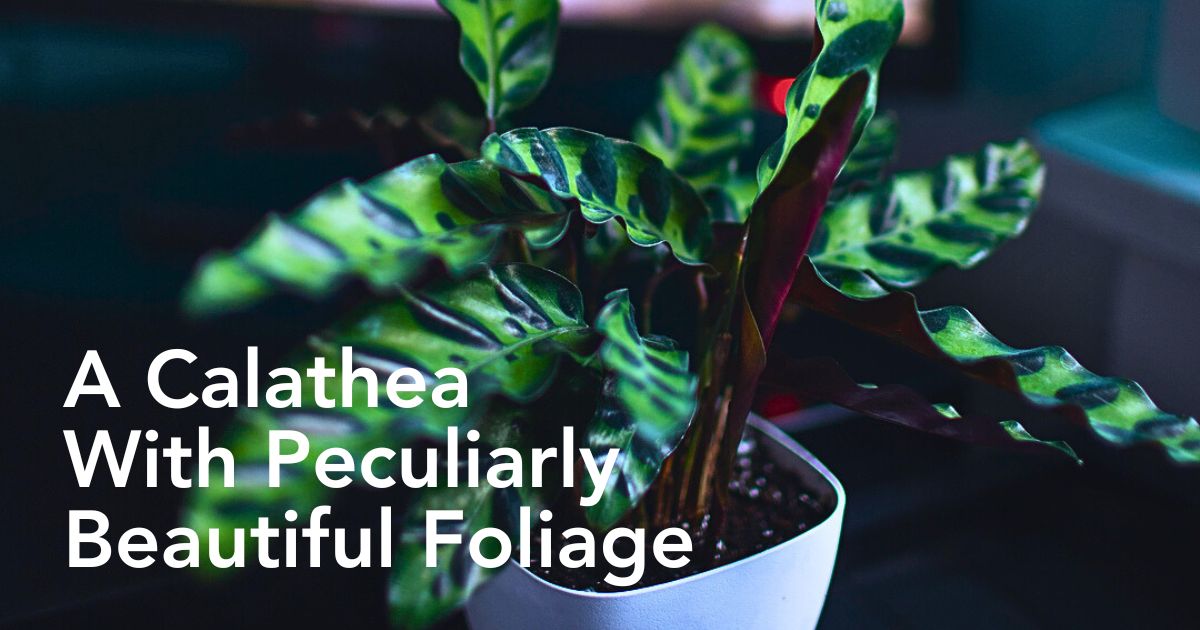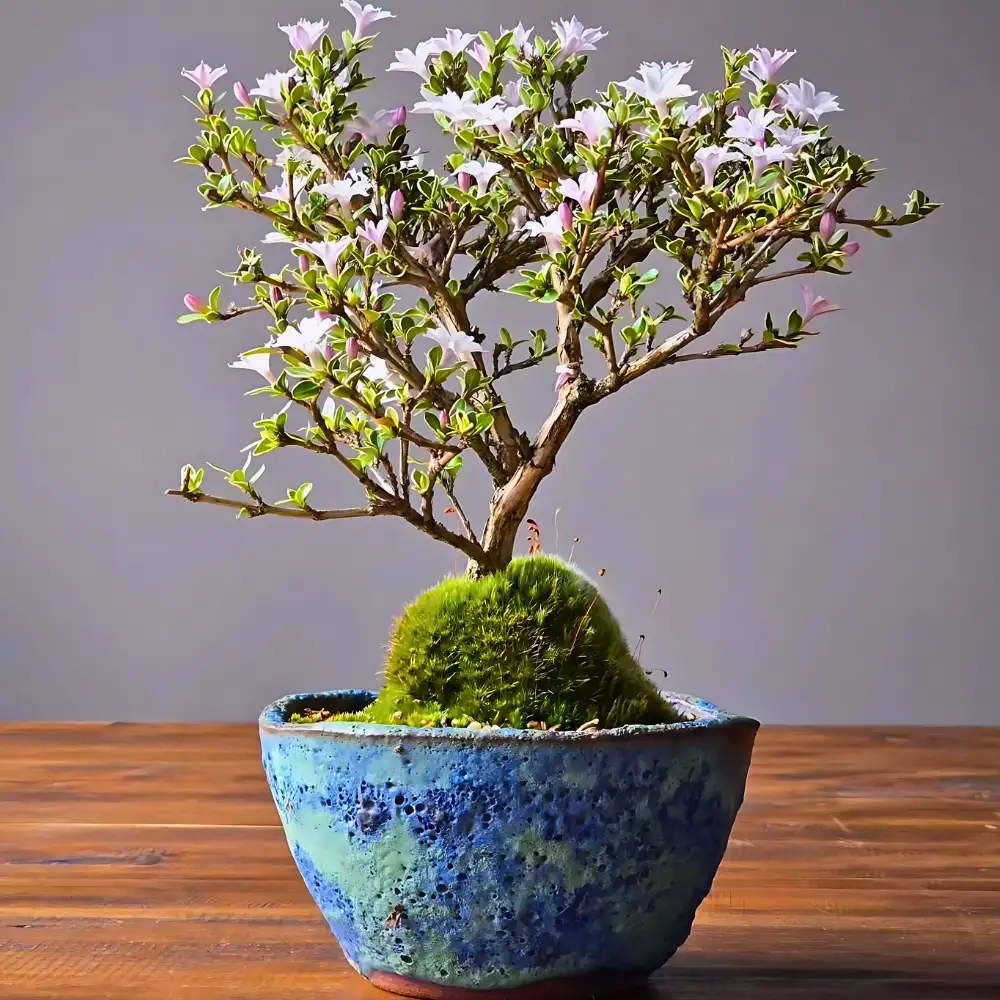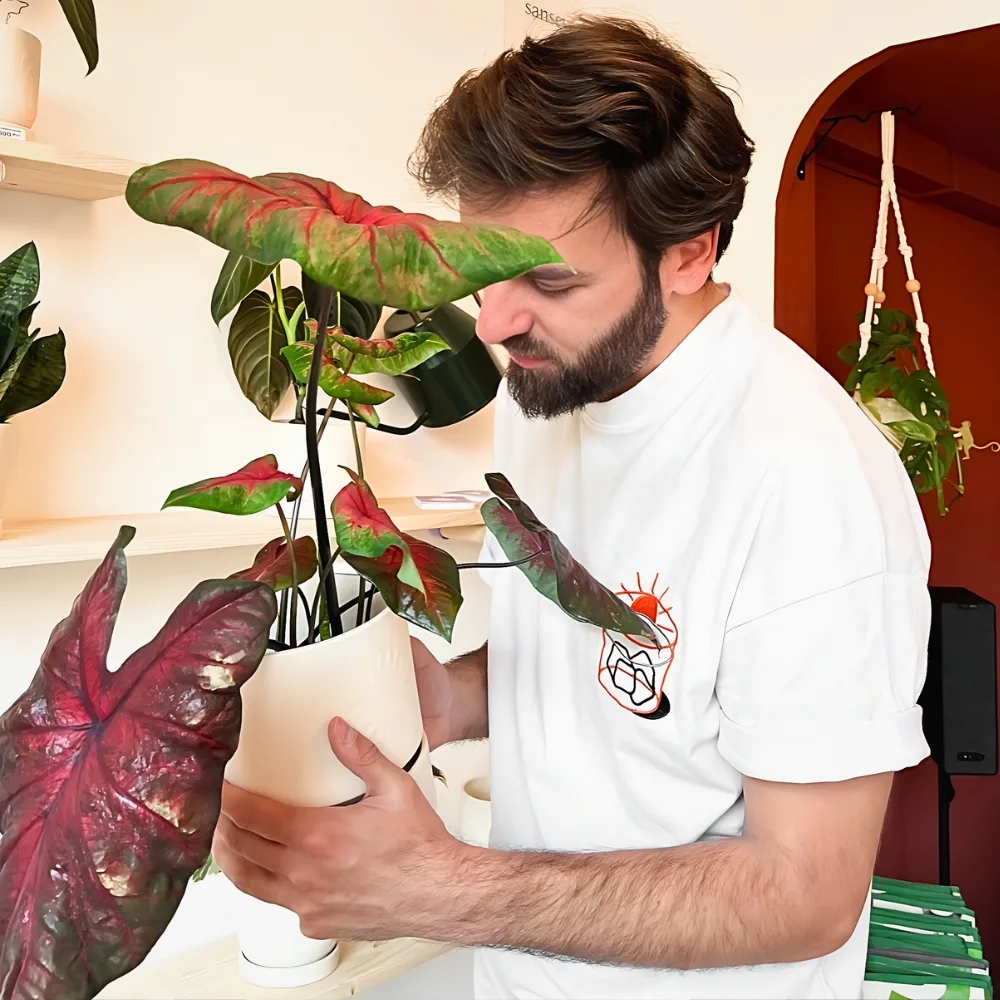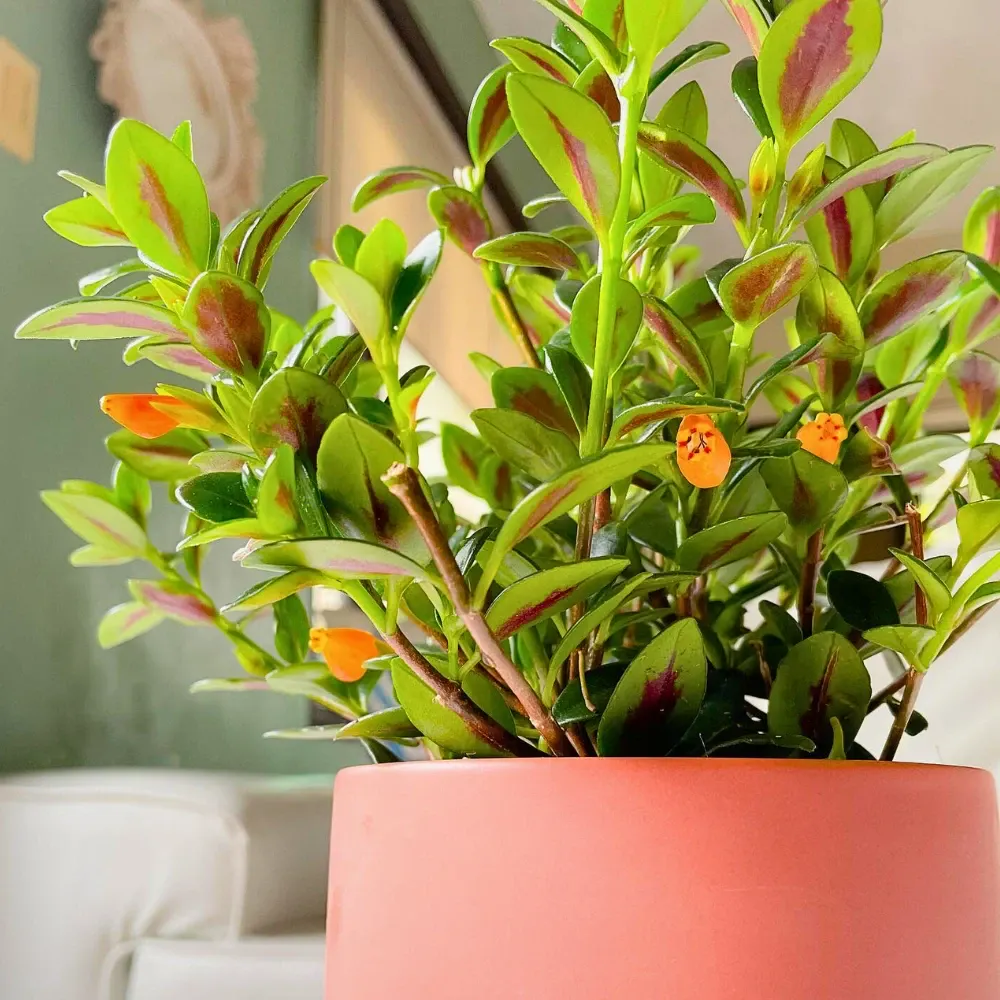Are you keen on adding an exotic feel to your indoor garden? Then the rattlesnake plant, — also called Calathea lancifolia or Goeppertia lancifolia — scientifically called Goeppertia insignis, would make an excellent choice. This Calathea variety with luxurious, wavy foliage patterned like the scales of a rattlesnake, makes for a true masterwork of a houseplant.
Plus, with its relatively low maintenance and care requirements, the rattlesnake plant is fast gaining widespread popularity among plant enthusiasts. They consider it a perfect choice for bringing the serene beauty of the Amazonian jungle right into their homes. And this is all for a good reason; because this houseplant deserves all the accolades that come its way.
What Is a Rattlesnake Plant?
The rattlesnake plant is a member of the Marantaceae, or ‘Prayer Plant’ family. This evergreen perennial is known for its distinctively patterned leaves. It shares the Prayer Plant (Maranta leuconeura) family’s intriguing photoactive foliage, meaning that its leaves move with the light source during the day and fold up at night, imitating the motion of praying hands.
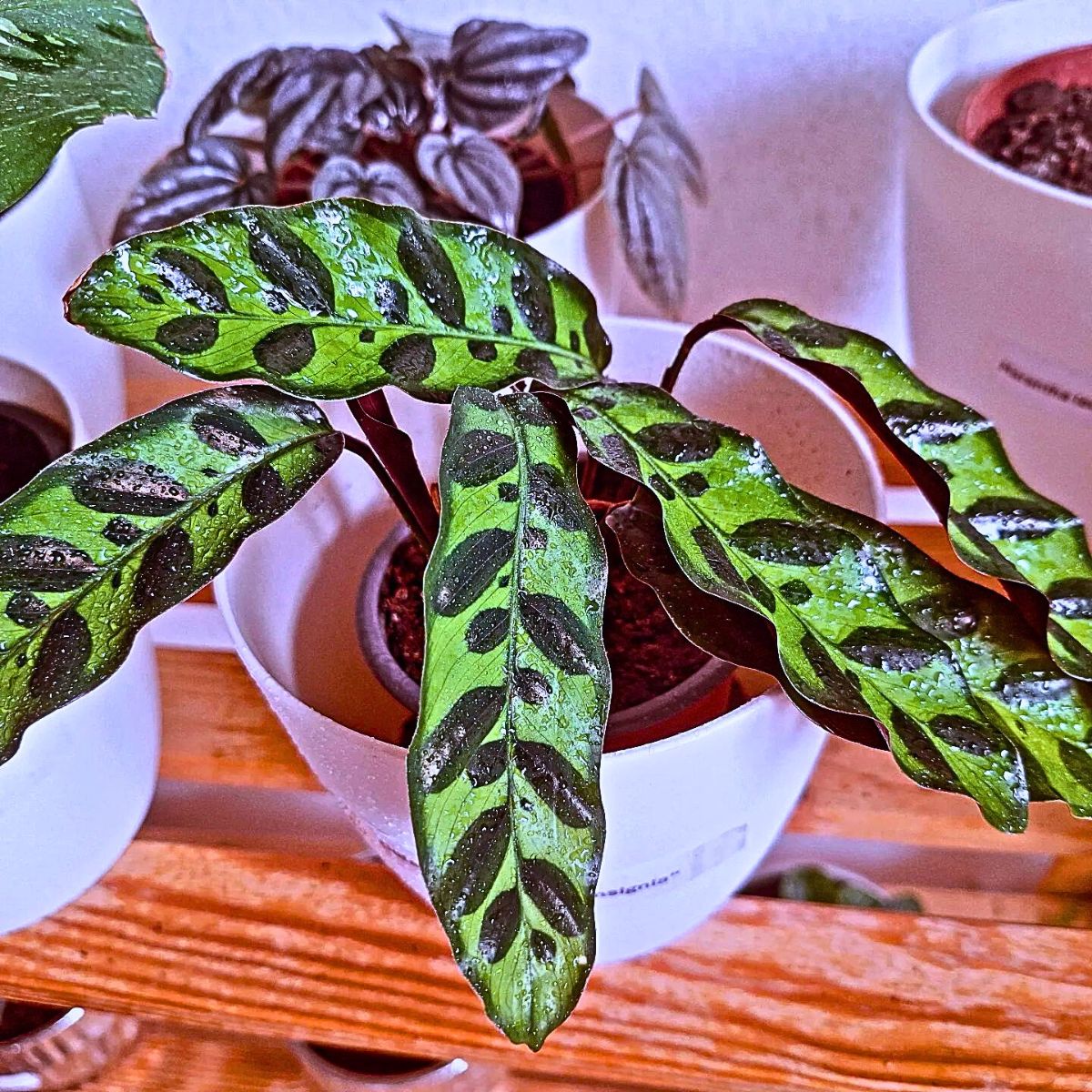
Photo by @pokojovky_nezbedny_slahoun
Indigenous to the warm and moist areas of Brazil — more so the Brazilian rainforest — this plant thrives in humidity and moderate temperatures. It boasts ornamental, long, and elegant leaves with a wavy design along the edges. The leaves are variegated with shades of green, and the undersides have beautiful purplish-red tones. In its native rainforest habitat, the rattlesnake plant produces small yellow flowers in late spring, but it is unlikely to bloom like so when grown indoors.
These plants typically grow at a moderate pace, but unfavorable conditions can slow or stop their growth. Rattlesnake plants can grow up to around 20 inches tall when kept in greenhouses or terrariums. Even so, mature plants grown in ideal conditions can reach up to three feet tall and three feet wide and have large, oblong leaves.
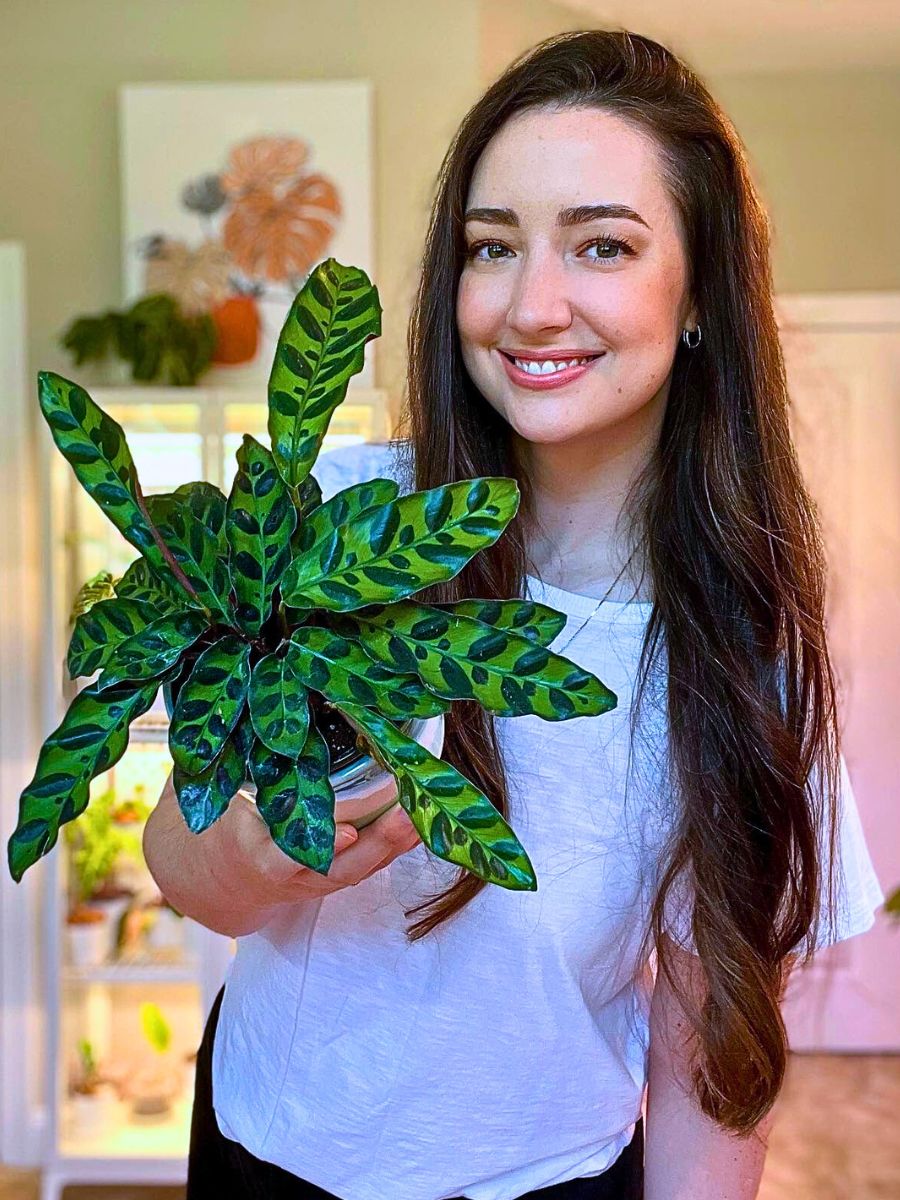
Photo by @plantsbymelissa
While not as high-maintenance as some of its other Calathea counterparts, the rattlesnake plant still requires specific care to thrive indoors, where this South American rainforest native can bring out a unique touch of exoticism.
Worth mentioning, however, is that despite the near-similarity in their names, the rattlesnake plant is different from the rattlesnake master (Eryngium yuccifolium), which is a member of the Apiaceae (carrot family) and possesses long, narrow, blue-green leaves with sharp tips and spiny margins, resembling yucca plants. Native to prairies and meadows in the eastern U.S., the rattlesnake master thrives in full sun and well-draining soil and has, historically, been used by Native Americans as an antidote for rattlesnake bites, thus its name!
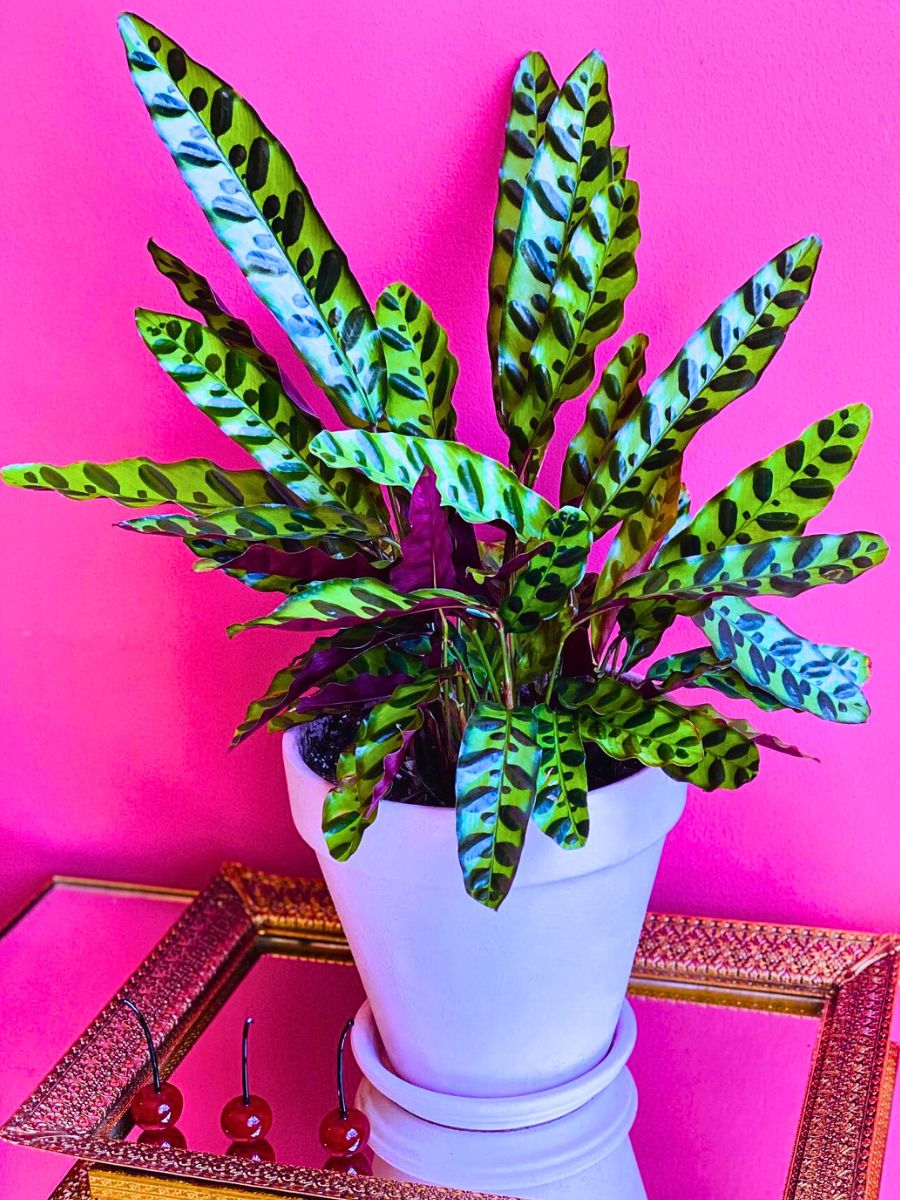
Nonetheless, both plants are unique and beautiful in their own ways, but they serve very different purposes and thrive in different environments.
Why Is it Called a Rattlesnake Plant?
The rattlesnake plant gets its name from the distinctive patterns on its leaves. The dark green spots on the light green background resemble the scales of a rattlesnake, giving the plant its unique and unforgettable moniker.
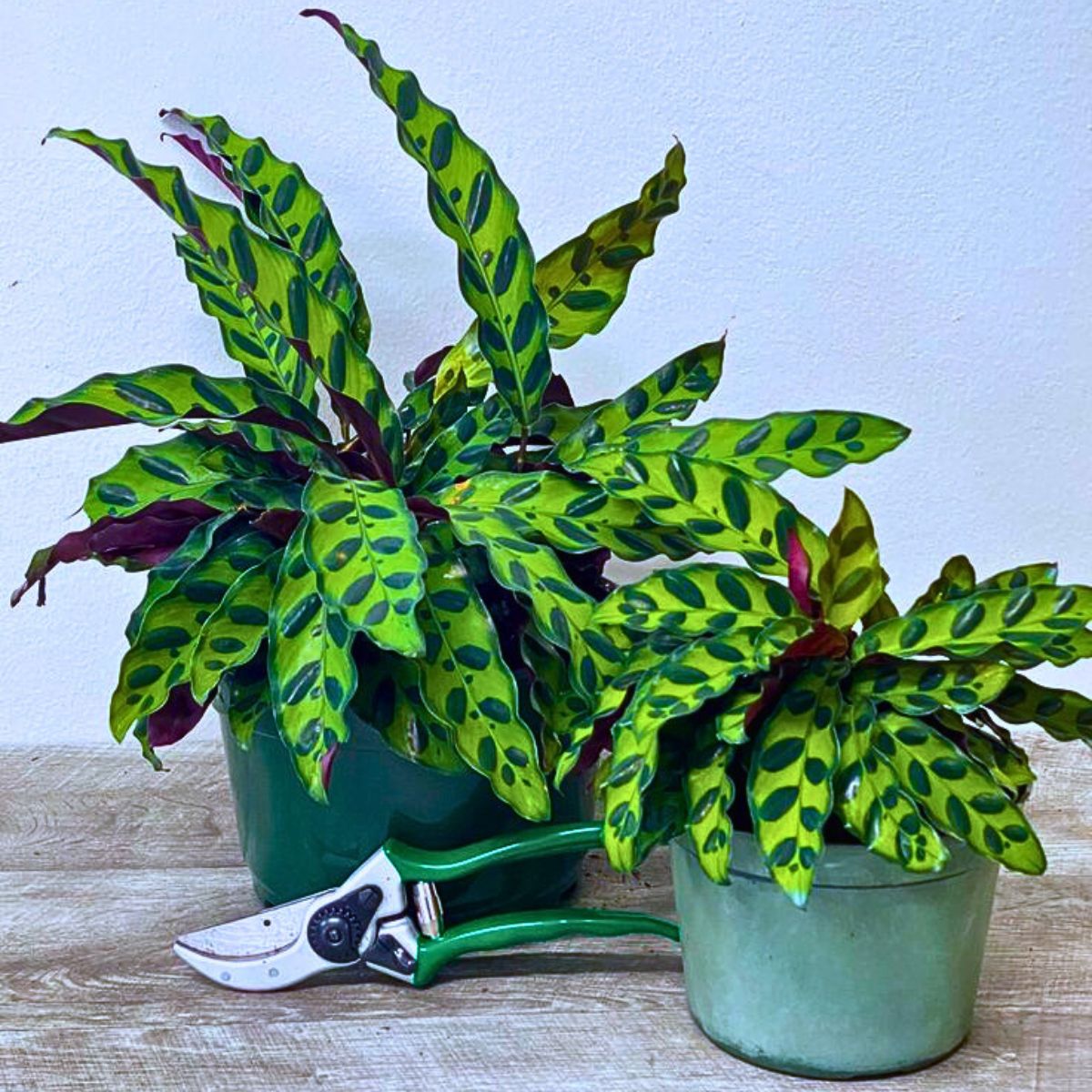
Photo by PlantVine
Still, yet, another inference presumes that despite its agreeable appearance, this plant got its somewhat truculent name from the sound it makes — when its leaves open during the day and close at night, they make a rustling sound, almost like a rattlesnake. If you've ever wondered about the nocturnal habits of the rattlesnake plant, now you know!
Growing the Rattlesnake Plant
Growing the rattlesnake Calathea plant is relatively straightforward. It is not a fussy plant that constantly begs for attention. It’s no wonder it is considered a perfect plant to introduce a novice gardener or plant enthusiast to Calatheas.
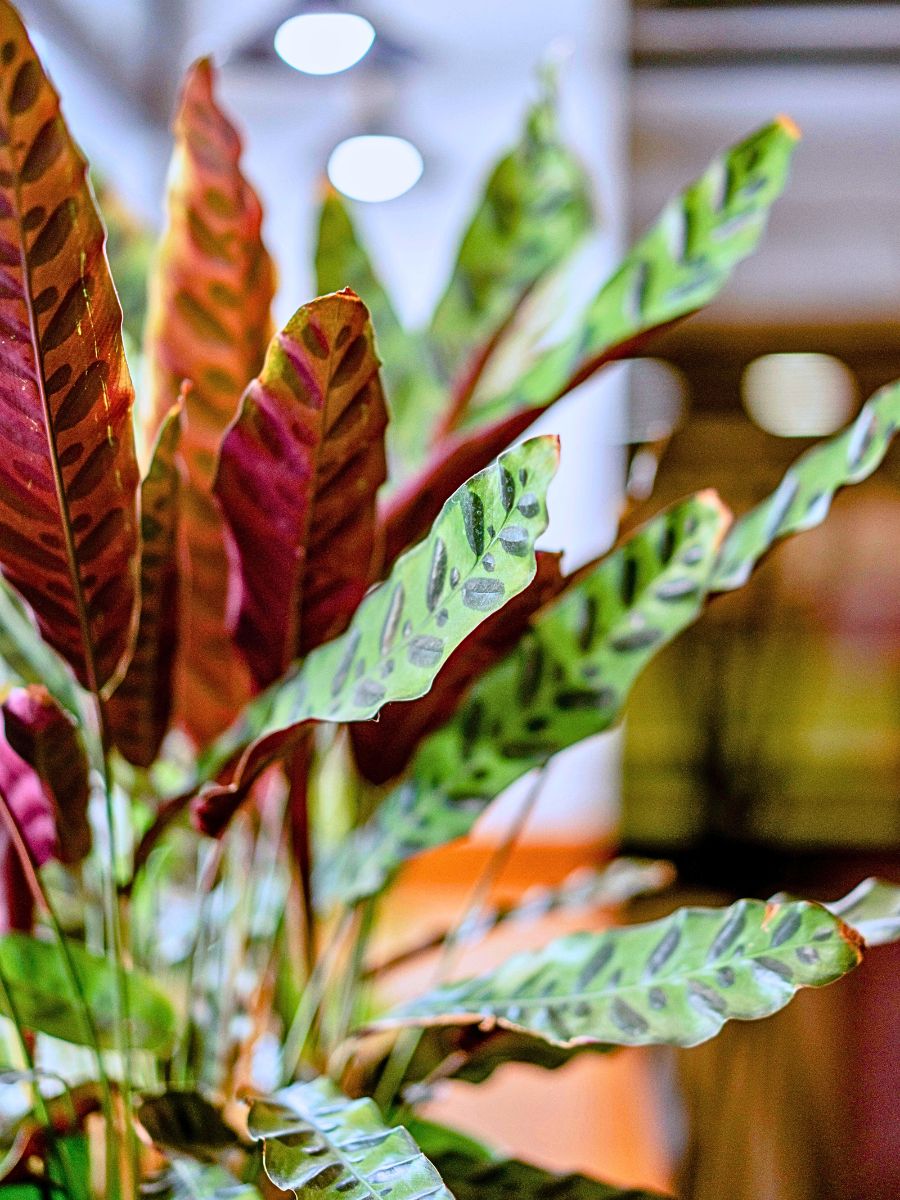
Propagating Rattlesnake Plants
One delight of growing rattlesnake plants is the ability to propagate them and expand one’s collection. The easiest method is division, which is best done in the spring when the plant is actively growing.
To propagate by division, start by gently removing the plant from its pot and locating a division point where the roots can be separated. Then, carefully divide the plant, making sure each new section has a good amount of roots attached.
Repot the divisions in fresh, well-draining potting mix and water thoroughly. Place the new plants in bright, indirect light and maintain consistent moisture as they become established.

You can also try propagating rattlesnake plants from seed, but this method is more challenging and time-consuming. The seeds can be difficult to source and may also have a low germination rate.
If you go the division way, however — to help the divisions perfectly establish roots — after probation, you can cover them with a clear plastic bag or dome to create a humid environment. This ensures its optimal growth.
Rattlesnake Plant Care and Maintenance Requirements to Keep Your Plant Thriving
While the rattlesnake plant is considered one of the easiest Calatheas to care for, it still has some specific needs to ensure its continued health and beauty. To provide the best possible rattlesnake plant care, one must first focus on its key maintenance requirements. Here's an analysis of what one needs to do regarding the plant’s care.
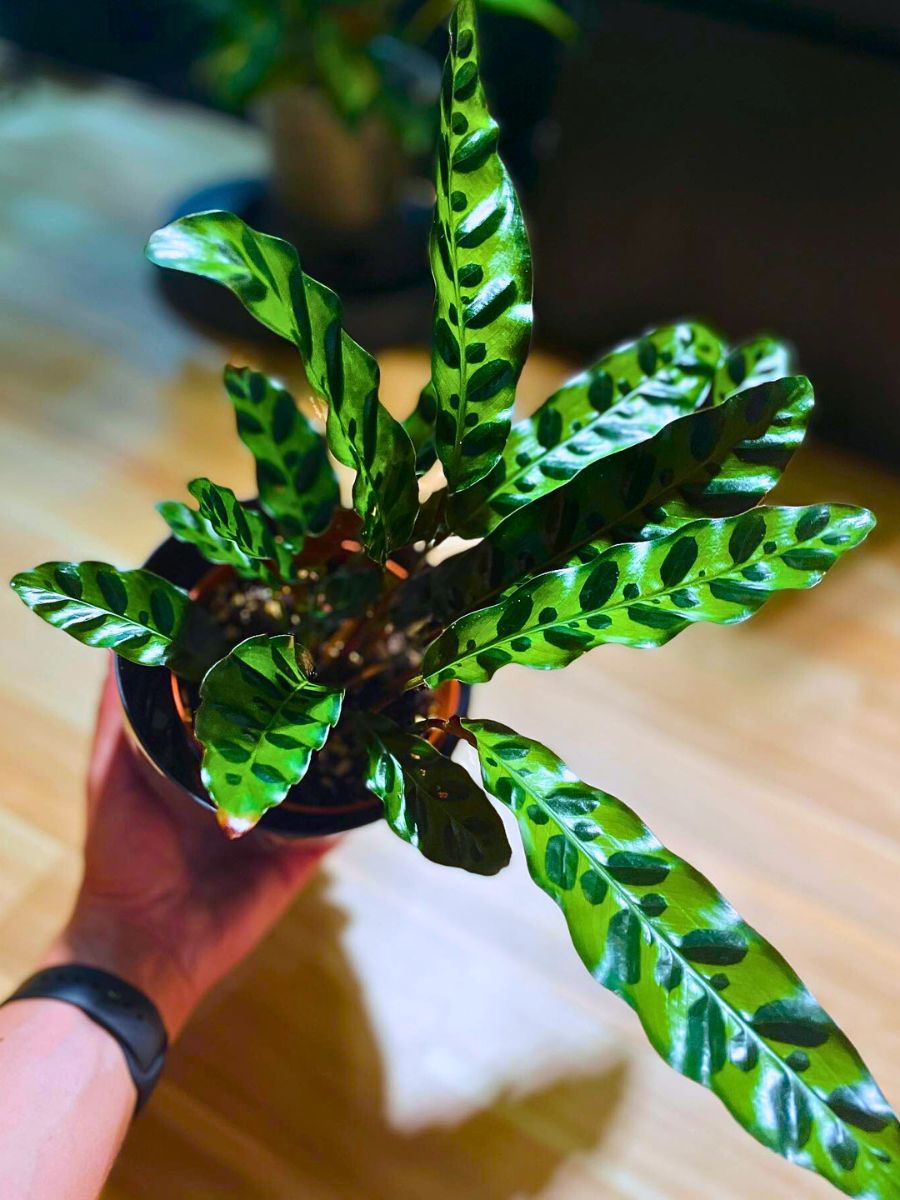
Rattlesnake Plants Thrive in Bright Indirect Light
As a forest-dwelling plant, the rattlesnake plant tolerates low, indirect light, similar to its native habitat. Direct sunlight can scorch its delicate leaves, causing them to fade in color, lose their distinctive markings, and become damaged. Too much direct light can also cause green spots to appear on the leaves. Slightly lower light levels are therefore advisable.
Therefore, an east-facing window or a spot a few feet back from a west-facing window are ideal locations for the plant. Also, avoid placing your rattlesnake plant in direct southern exposure, as the intense afternoon sun can be too much for it.
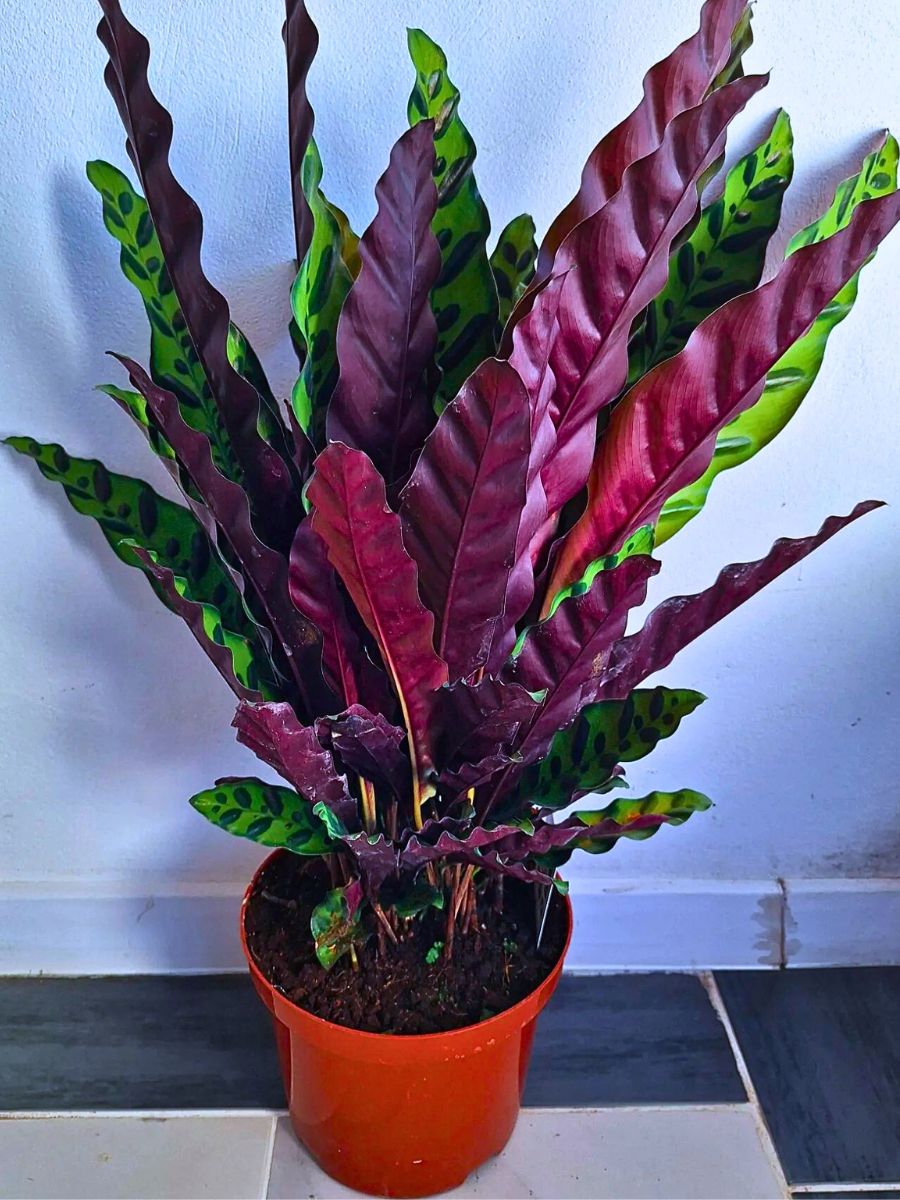
Photo by @butik.cveca012
If natural light is lacking, you can supplement it with artificial lighting. Just be sure to keep the light source indirect and consistent. Likewise, if you’d want to boost the light your rattlesnake plant receives, a subtly bright spot in a well-lit room would work well.
Soil and Potting Rattlesnake Plants
The ideal soil for a rattlesnake plant is a well-aerated, moisture-retentive mix. A combination of two parts peat moss or coco coir to one part of perlite or another drainage amendment works well. You should avoid heavy, dense potting mixes, as they can lead to root rot.
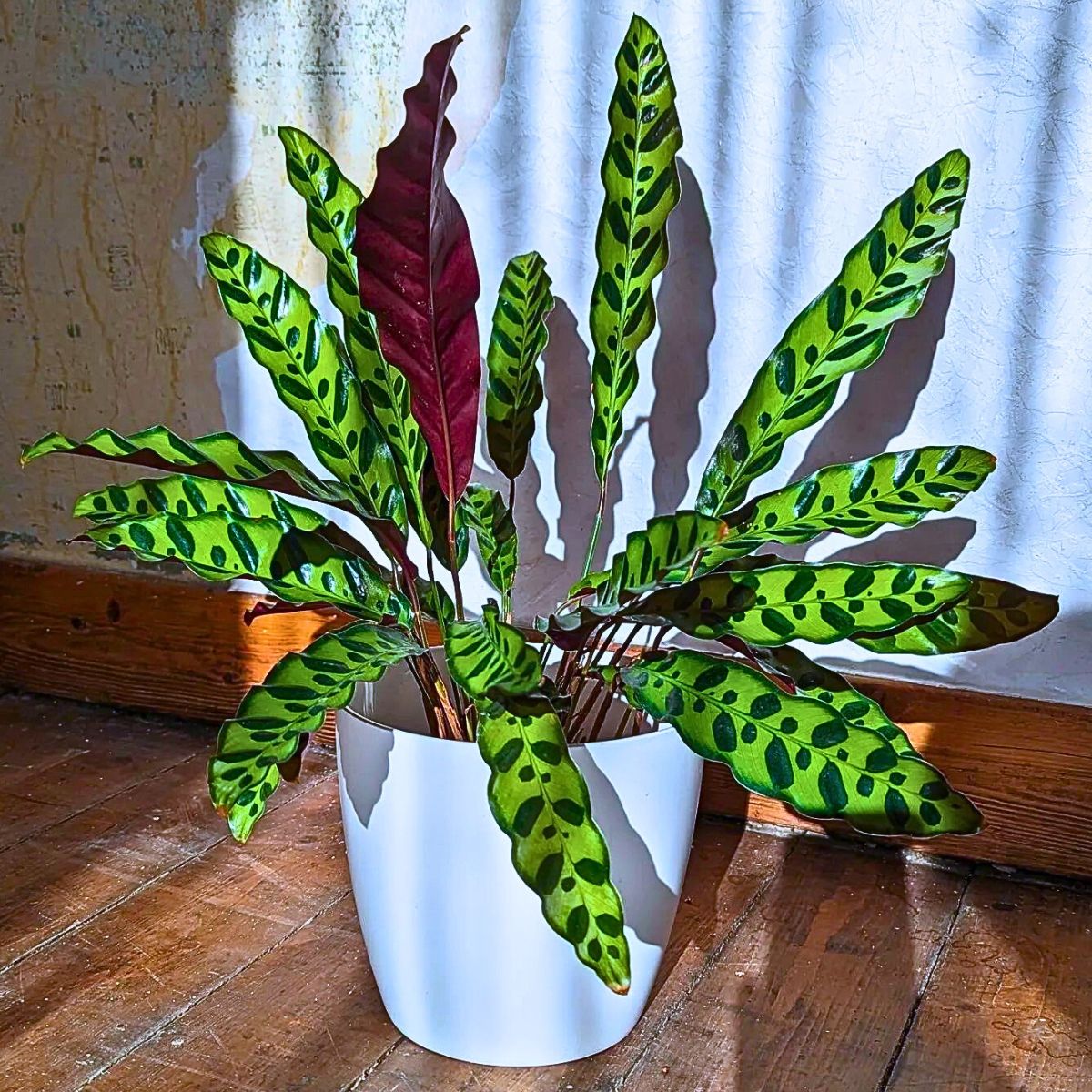
When repotting, only go up one pot size at a time, as rattlesnake plants don't like too much excess soil. Be gentle when dividing and transplanting them, as their roots are quite delicate. Repotting the rattlesnake plant can be done every year or two, or when the roots become root-bound. Choose a pot that is only slightly larger than the previous one, and with appropriate drainage holes.
Similarly, to help your plant thrive, refresh the top layer of soil with new potting soil in the spring. This new potting soil will ensure the rattlesnake plant gets all the nutrients it needs.
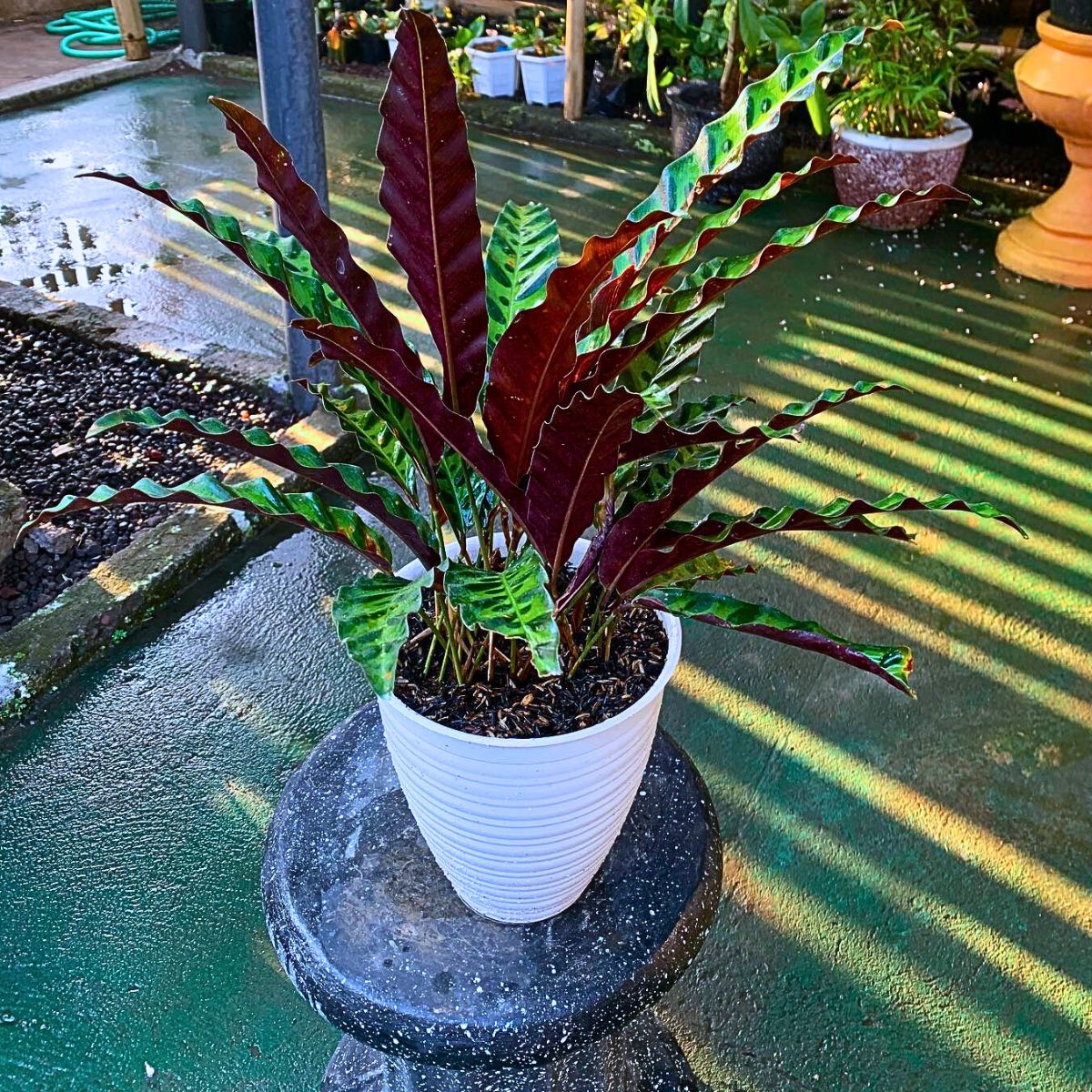
Fertilizer Feed Needs for this Potted Plant
Rattlesnake plants benefit from light and regular fertilization during the growing season. Therefore, use a balanced, water-soluble fertilizer diluted to half strength every 2-4 weeks. Be careful, however, not to over-fertilize them as these plants are sensitive to mineral buildup.
Watering the Rattlesnake Plant
Rattlesnake plants need consistently moist, but not soggy, soil. Water the plant when the top inch or two of the soil begins to dry out, being careful not to let it sit in water. Generally, the purpose is to keep the soil lightly moist at all times.
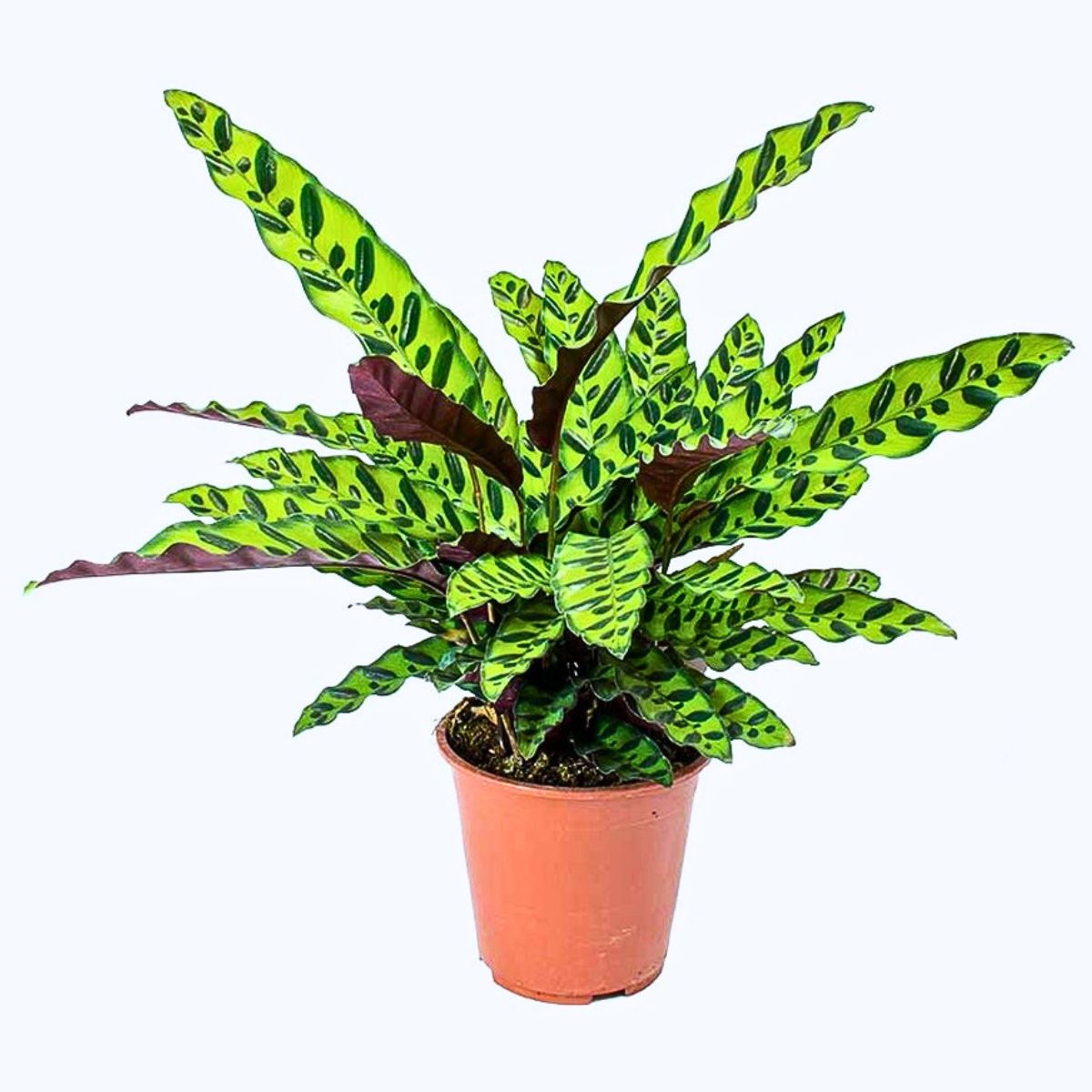
Basically, watering rattlesnake plants regularly during the growing season is crucial. Maintaining moist soil is important, but watering should be reduced in the winter, and only done when the top layer of soil has dried out.
You should note that inundating it with water can be harmful, causing root rot and yellowing leaves. Contrariwise, under-watering the plant can cause the leaves to curl. You can check the soil moisture level by poking your finger into it up to your first knuckle; if it feels dry, water the plant!
It is also important to use filtered or distilled water, as rattlesnake plants are sensitive to the minerals and chemicals found in tap water. Letting the water sit out overnight to de-chlorinate can help.

Humidity and Temperature that Suits Rattlesnake Plant Growth
As a tropical plant, the rattlesnake plant thrives in high humidity levels of 50% or more. Grouping it with other plants, using a pebble tray, or running a humidifier can all help boost humidity around your plant.
The rattlesnake plant prefers a range of 65°F to 85°F. It should be kept away from sudden temperature changes, drafts or vents, air conditioning units, and heating systems.
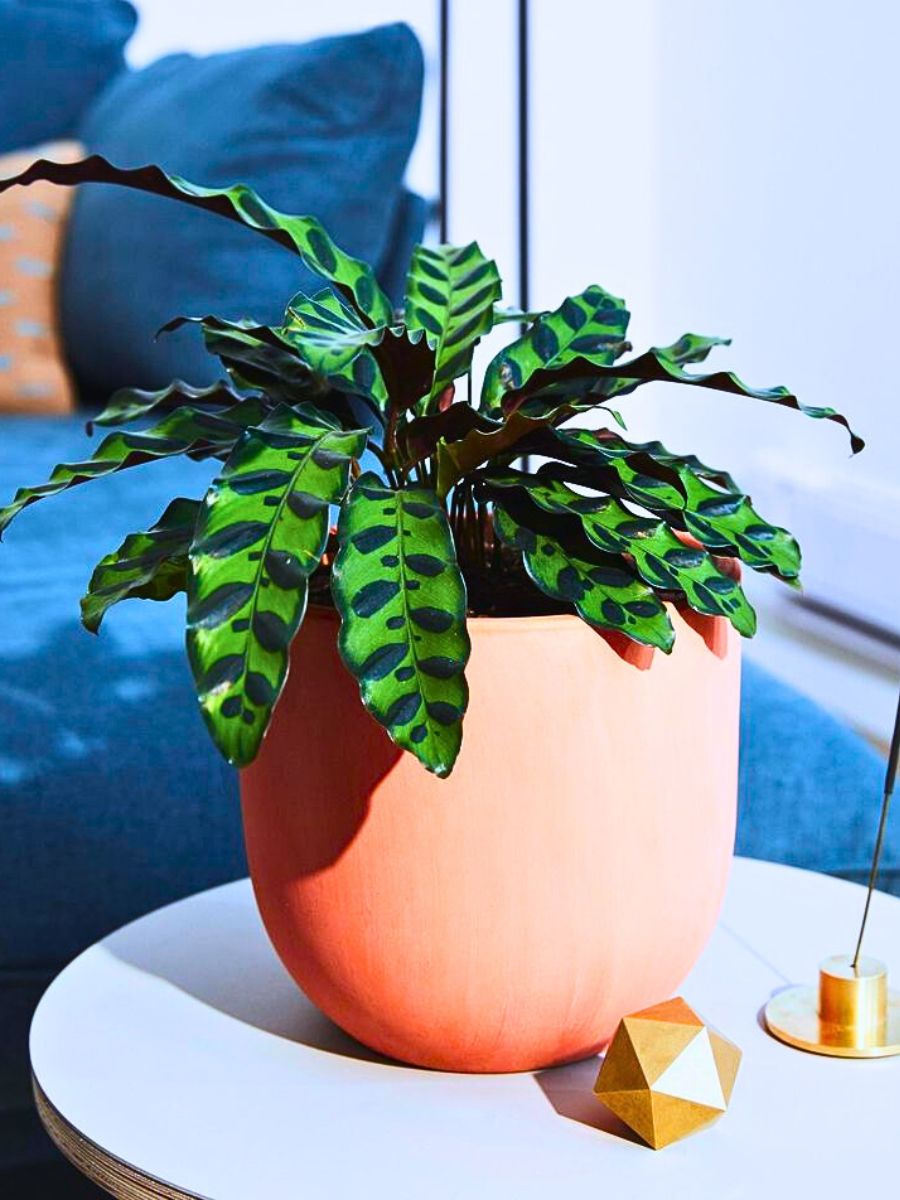
Rattlesnake Plants’ Common Pests and Diseases
While the rattlesnake plant is generally easy to care for, it can still fall victim to common houseplant pests and diseases if conditions aren't quite right. Common plant problems include dealing with pests like spider mites, aphids, and mealybugs that may attack the plant, especially during drier winter months. Closely inspect the leaves and undersides for signs of infestation, and treat promptly with a gentle insecticidal treatment or neem oil solution.
On the disease front, the rattlesnake plant is susceptible to fungal issues like leaf spots if the foliage stays too wet. Root rot is also a concern if the soil stays consistently soggy. Proper watering and good air circulation can, therefore, help prevent many disease problems.
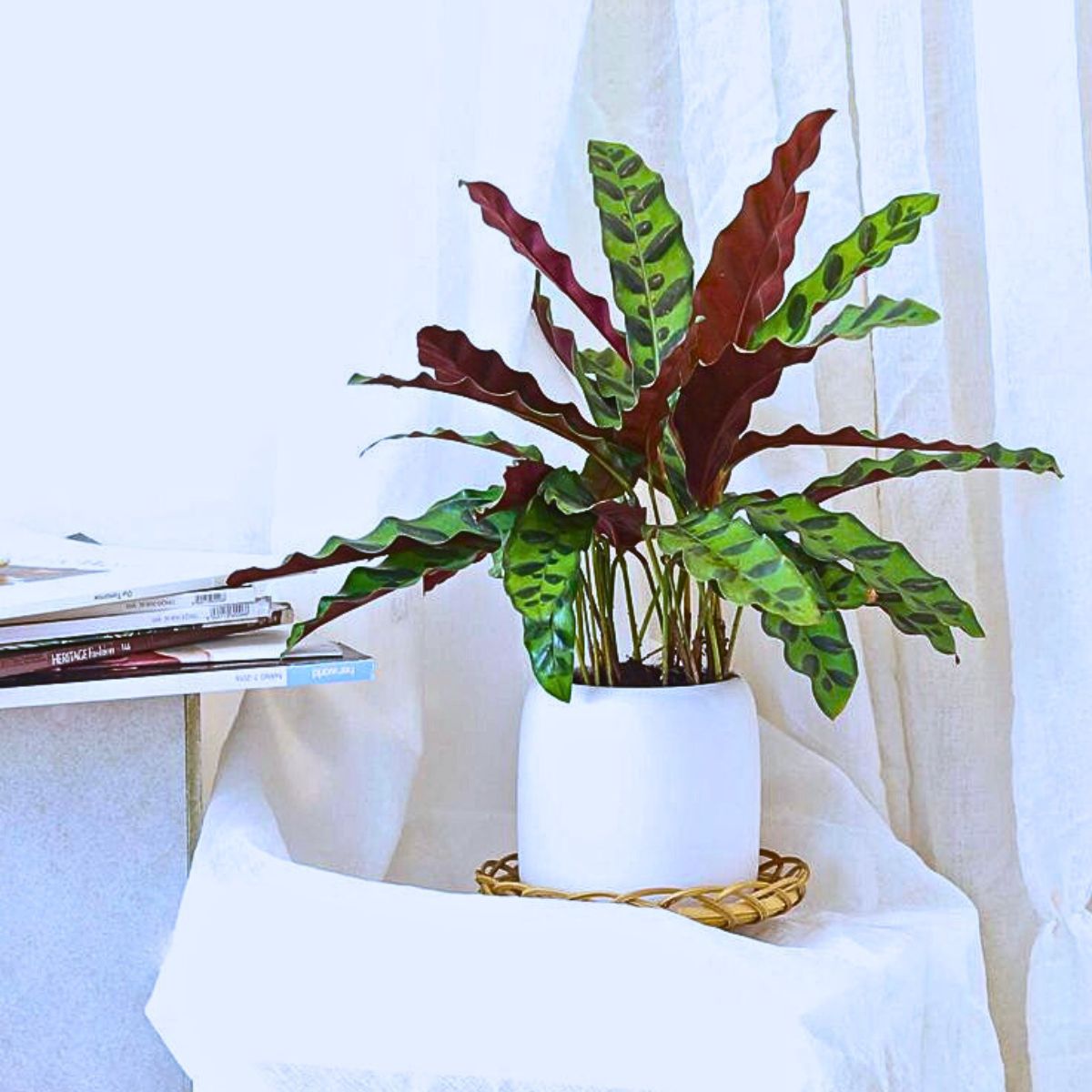
If you notice any discoloration, wilting, or other signs of trouble, address the issue quickly to prevent it from spreading and harming your plant.
Identifying Your Rattlesnake Plant’s Problems
Despite being a plant that is generally easy to maintain, the rattlesnake plant can be susceptible to a few common problems. Some common issues you may encounter when caring for a rattlesnake plant are easily identifiable. They include:
Brown spots on rattlesnake plant. Several factors, including low humidity, dry soil, direct sunlight, over-fertilization, or an uneven watering routine can cause these spots on the leaves.
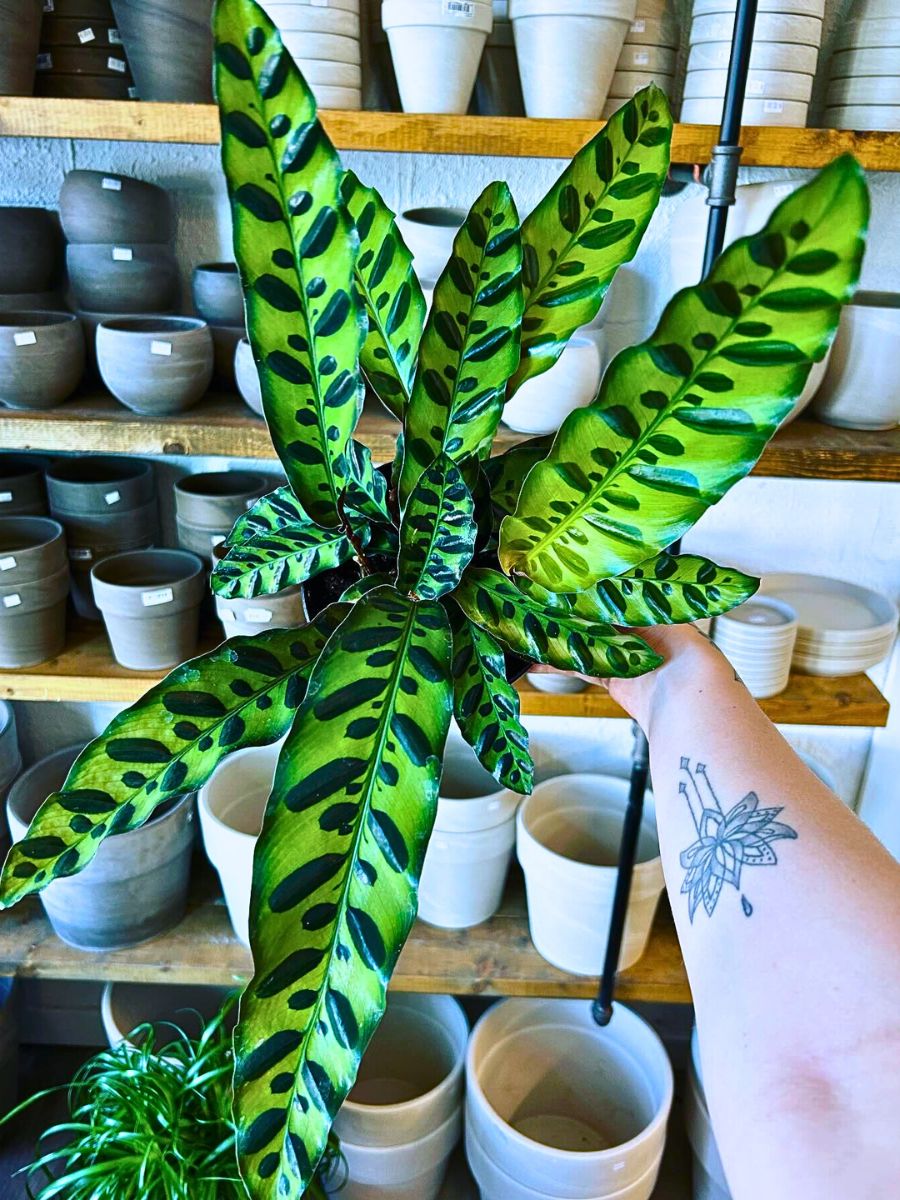
Curling rattlesnake plant leaves can be a sign of low humidity, dry soil, or underwatering. Brown or crispy leaf edges are also often a sign of low humidity. To address these issues, increase the moisture in the air around your plant by misting, using a pebble tray, or running a humidifier.
Sometimes, the rattlesnake plant has curling or drooping leaves. Drooping leaves could indicate underwatering, while curling leaves may indicate too much direct sun. So, adjust your watering and lighting accordingly.
In addition, you may notice yellow leaves. This could signify overwatering, poor drainage, or a nutrient deficiency. You can, therefore, check the soil moisture and fertility levels. Leaf spots or discoloration are another issue that may indicate a disease or pest problem. You can, for that reason, inspect the plant closely and treat any issues promptly.
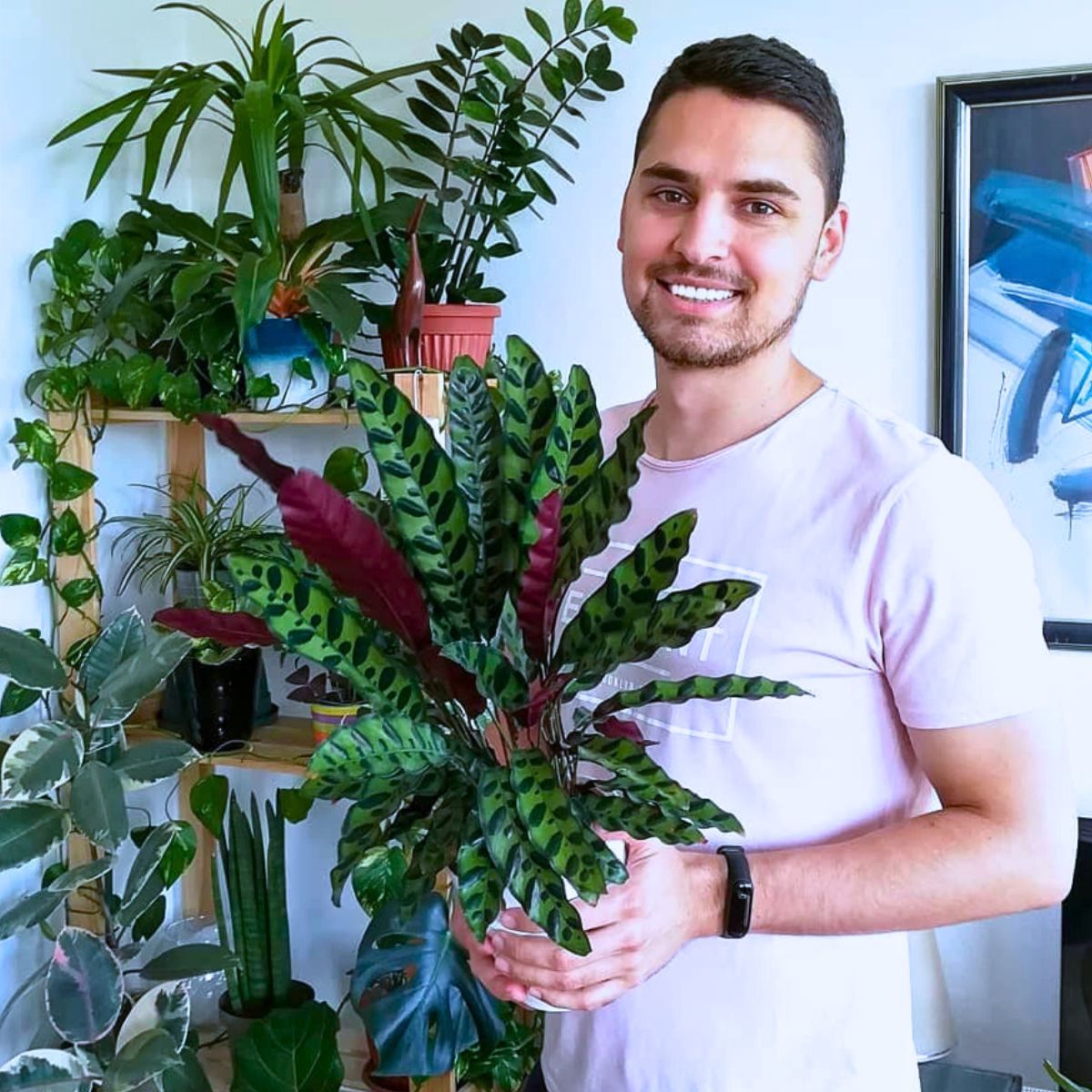
Photo by @plants.rs
Are Rattlesnake Plants Toxic to Cats and Other Pets?
The good news is rattlesnake plants are non-toxic to humans and pets, including cats and dogs. Children are also safe around this plant. But perhaps, you may consider placing it out of their way, for the obvious reason that both kids and pets may be fussy with the plant. Even so, you can confidently grow these plants, knowing that they will not pose a risk to kids or your curious furry friends and that they are safe around this beautiful houseplant.
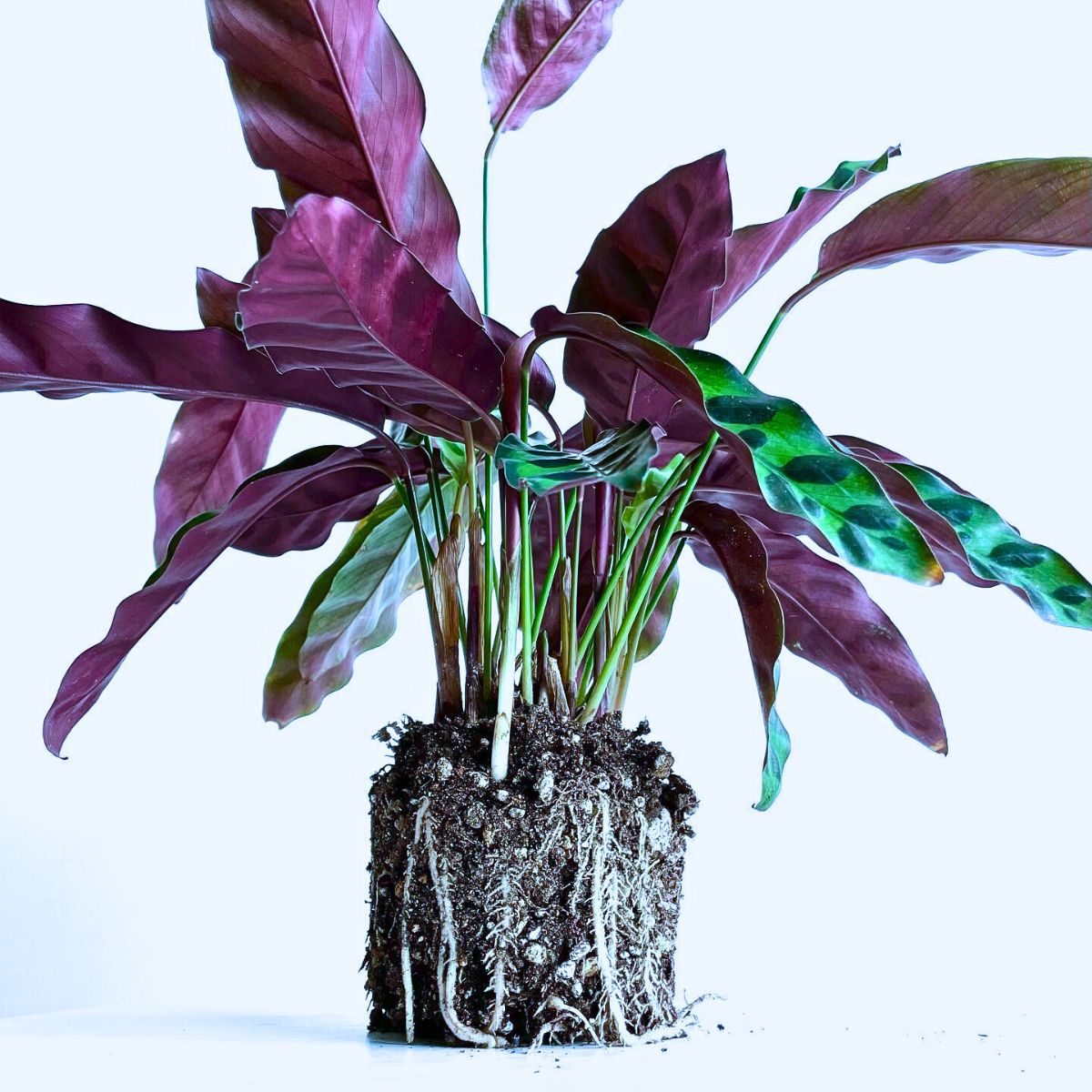
Rattlesnake Plant Offers a Unique Experience as a Houseplant
All said and done, you can be sure that the rattlesnake plant is, in every way, a fabulous addition to any home. The unique foliage and relatively easy care regimen make it a great choice for both beginner and experienced houseplant enthusiasts. And with the right rattlesnake plant care regimen, you can be sure to enjoy the beauty of this Calathea variety for years.
Feature image by @plantsbymelissa, header image by @thedaintysquid

